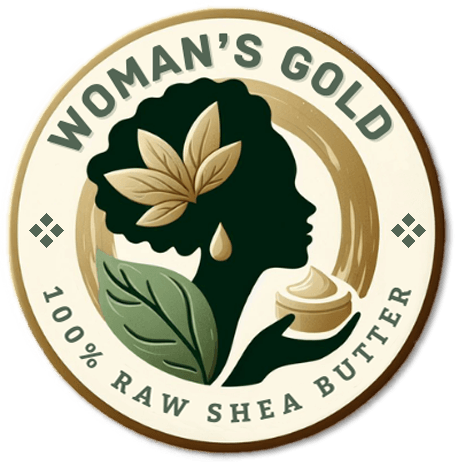
Hi all moms…
Today I’m going to kick things off by exploring the fascinating world of newborn skin. It’s crucial to understand that newborn skin isn’t just a smaller version of adult skin. It’s actually quite different in structure and function, which means caring for it demands a special approach. Now, newborn skin pH is neutral right at birth, but don’t let that fool you; it soon becomes more acidic. This acidity isn’t merely a chemical footnote; it’s a key player in defending against harmful microbes that cause infections.
In my opinion, knowing about these pH changes is just as important as the ABCs of parenting. So, now that you’re keyed in to baby skin’s pH dynamics, there’s another piece to the puzzle; thermoregulation, or the ability to control body temperature. Newborns aren’t so good at this, which is why swaddling isn’t just an old wives’ tradition—it’s a practical way to keep their delicate skin from getting too cold, which can compromise its integrity.
This isn’t just about understanding these unique skin properties; it’s also about translating this knowledge into day-to-day care. Your next move? Get ready to dive deeper—figuratively, of course. You’re going to find out exactly how to nurture this precious skin and guard it against the everyday challenges of the big, wide world.
Nurturing Newborn Skin: Best Practices
When it comes to caring for your baby’s skin, some simple, yet effective approaches can make a big difference. Daily cleansing is a must, but it’s not about just keeping clean. Using gentle cleansers designed for infants helps avoid upsetting the skin’s natural pH balance, which, as you’ve learned, plays a pivotal role in warding off infections.
After cleansing, applying an emollient is another non-negotiable step to nurture newborn skin. Emollients, like shea butter, are a boon for keeping your baby’s skin moisturized. They form a protective barrier that can help maintain skin integrity, especially when dealing with poor thermoregulation in infants. The trick is to use just enough to hydrate the skin without causing over-hydration.
Minimal handling is another cornerstone of newborn skin care. While it’s tempting to constantly touch and cuddle your little one, too much handling or rubbing can stress their delicate skin. So, handling your baby with care during bath time, diaper changes, and dressing is key to avoiding irritation.
Ensuring your baby’s skin stays in top condition requires a balance between cleanliness, hydration, and gentle care. Through these practices, you’re setting the stage for healthy skin development, which is critical in the early stages of life.
Addressing Common Newborn Skin Concerns
When it comes to newborns, their skin health is as delicate as it is crucial. One of the most common woes that parents face is diaper rash. This uncomfortable condition is, however, manageable with some proactive steps. The key is in frequency – frequent diaper changes are your first line of defense. This reduces moisture accumulation that can irritate the skin.
Besides regular changes, moisture barriers are heroes in disguise. Products designed to create a protective layer, such as zinc oxide creams or even shea butter, can work wonders. And let’s not forget the healing power of air exposure; a little bit of ‘free time’ sans a diaper promotes healing.
But did you know that skin hydration and pH level out at about 8 weeks old? Until then, you might notice your baby’s skin being more prone to issues. This is natural, as their skin is still adapting to the world outside the womb.
Premature infants can have an even more challenging time, as their skin barrier is less developed. That’s why extra care is needed to reduce any potential friction from diapers or clothing, and to manage over-hydration, which can weaken their already delicate skin.
Daily skin inspections by caregivers can do wonders for catching potential issues early. You’ll learn what’s normal and what’s not for your baby’s skin. And if you’re ever in doubt, your pediatrician is there to help. They bring a wealth of knowledge on how to nourish and protect your baby’s developing skin.
The Benefits of Shea Butter for Baby Skin Care
Now you’re equipped with a solid understanding of newborn skin needs and the common challenges it faces. The good news is, natural solutions like shea butter are here to help you navigate through this important stage of your baby’s life. Shea butter is a natural fat extracted from the nut of the African shea tree, known for its hydrating properties and gentle composition, making it a great choice for baby’s delicate skin.
Shea butter is gentle enough to respect the delicate pH balance of newborn skin, which, as you now know, starts off neutral and becomes slightly acidic to protect against infections. It’s rich in vitamins A and E, as well as essential fatty acids, providing nourishing care that supports healthy skin development without disrupting the skin’s natural protective barrier.
One of the perks of using shea butter is its versatility. You can smoothly integrate it into your baby’s skin care routine: from moisturizing after baths to tackling dry patches and even soothing the areas prone to diaper rash. And because it aids with thermoregulation, shea butter can be particularly helpful in maintaining your infant’s skin integrity, especially during the colder months when baby skin is prone to dryness.
When introducing shea butter into your baby’s skin care ritual, choose a high-quality, pure product to minimize the risk of irritation. As a rule of thumb, always perform a patch test to ensure your baby’s skin reacts well to the new product. In case of any concerns, or if your infant has underlying skin conditions, it’s wise to consult your pediatrician.
Caring for baby skin is a nurturing process that evolves as they grow. With each passing day, your baby's skin is developing, and by around 8 weeks, you can expect their skin hydration and pH levels to reach closer to adult standards. By using shea butter, you're providing a natural, protective layer that complements their developing skin, potentially easing the transition.
Ultimately, adding shea butter to your baby’s skin care could be a smooth move for both of you. Remember, skin care is one facet of overall wellness, and it’s just as important to check your baby’s skin daily for any changes or concerns. Communication with healthcare professionals is crucial; they are your allies in ensuring optimal skin health for your little one. Shea butter is about more than just moisturizing—it’s a comforting embrace from nature, offering a buffer against the elements while supporting your baby’s journey to a healthy, resilient skin.
